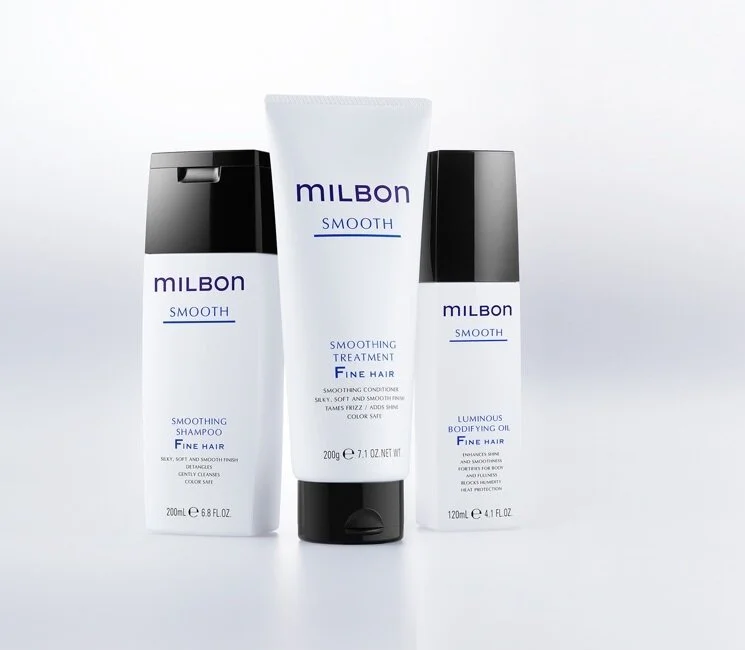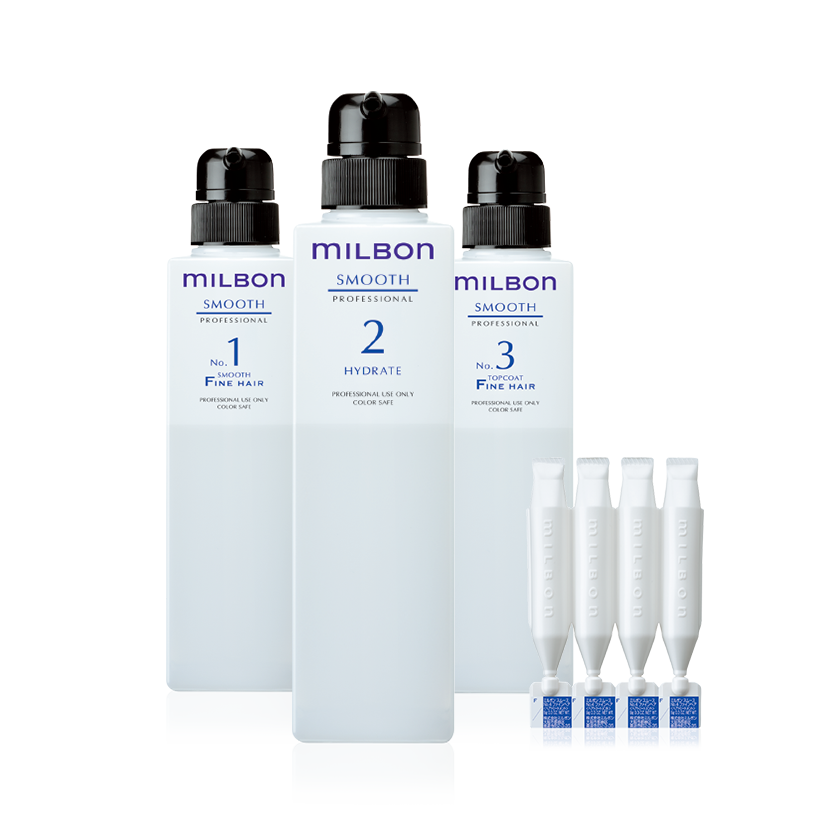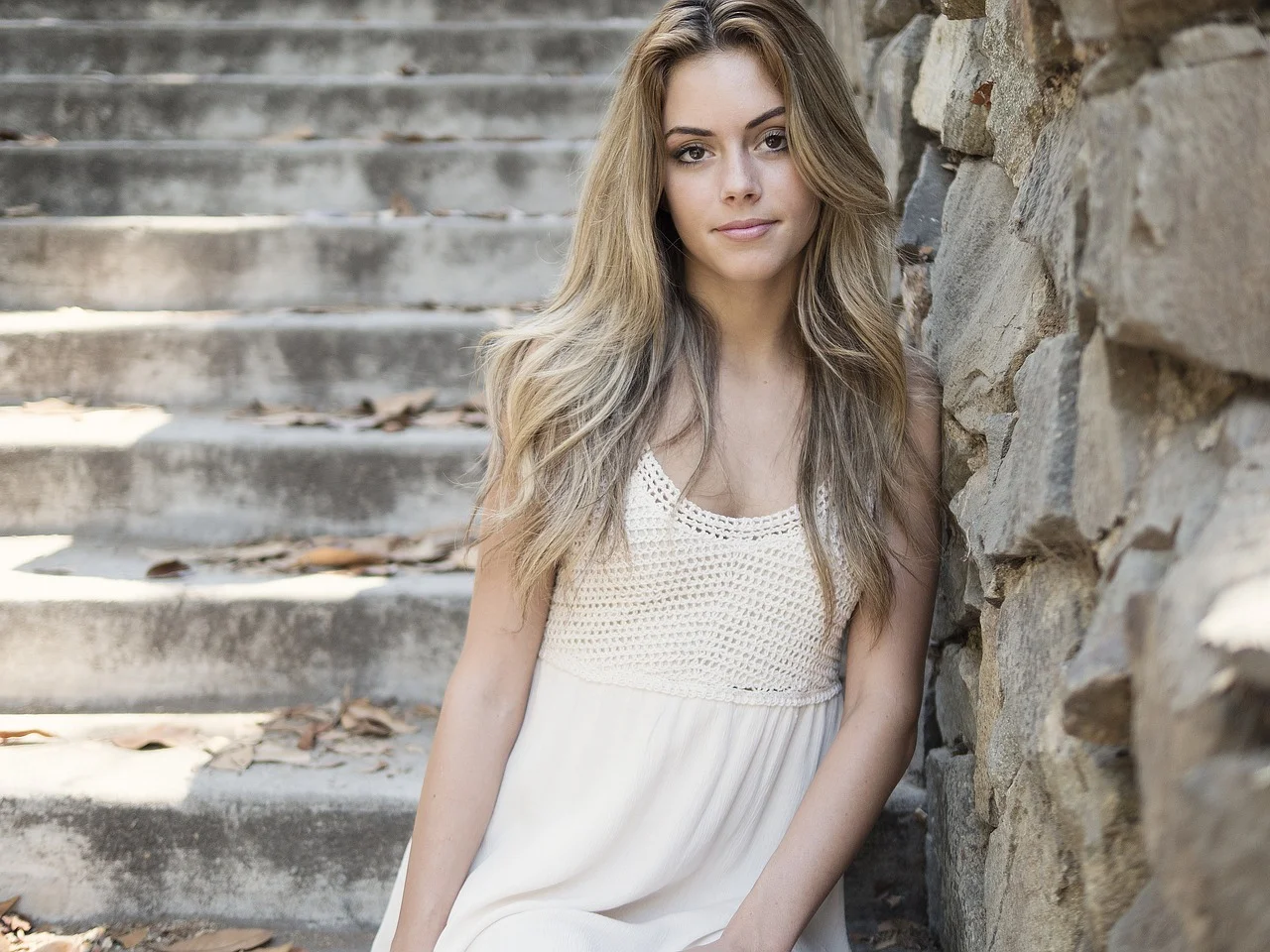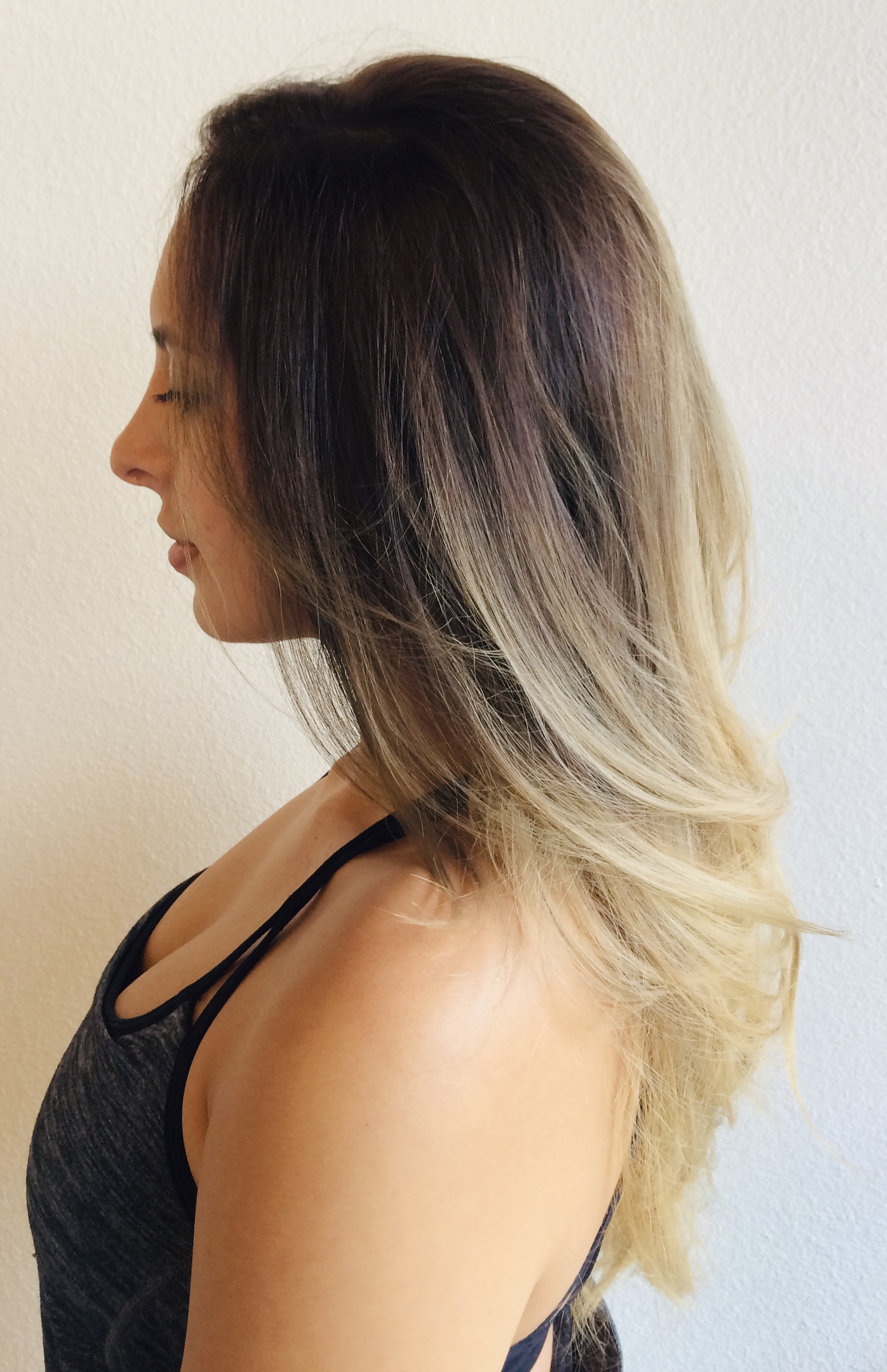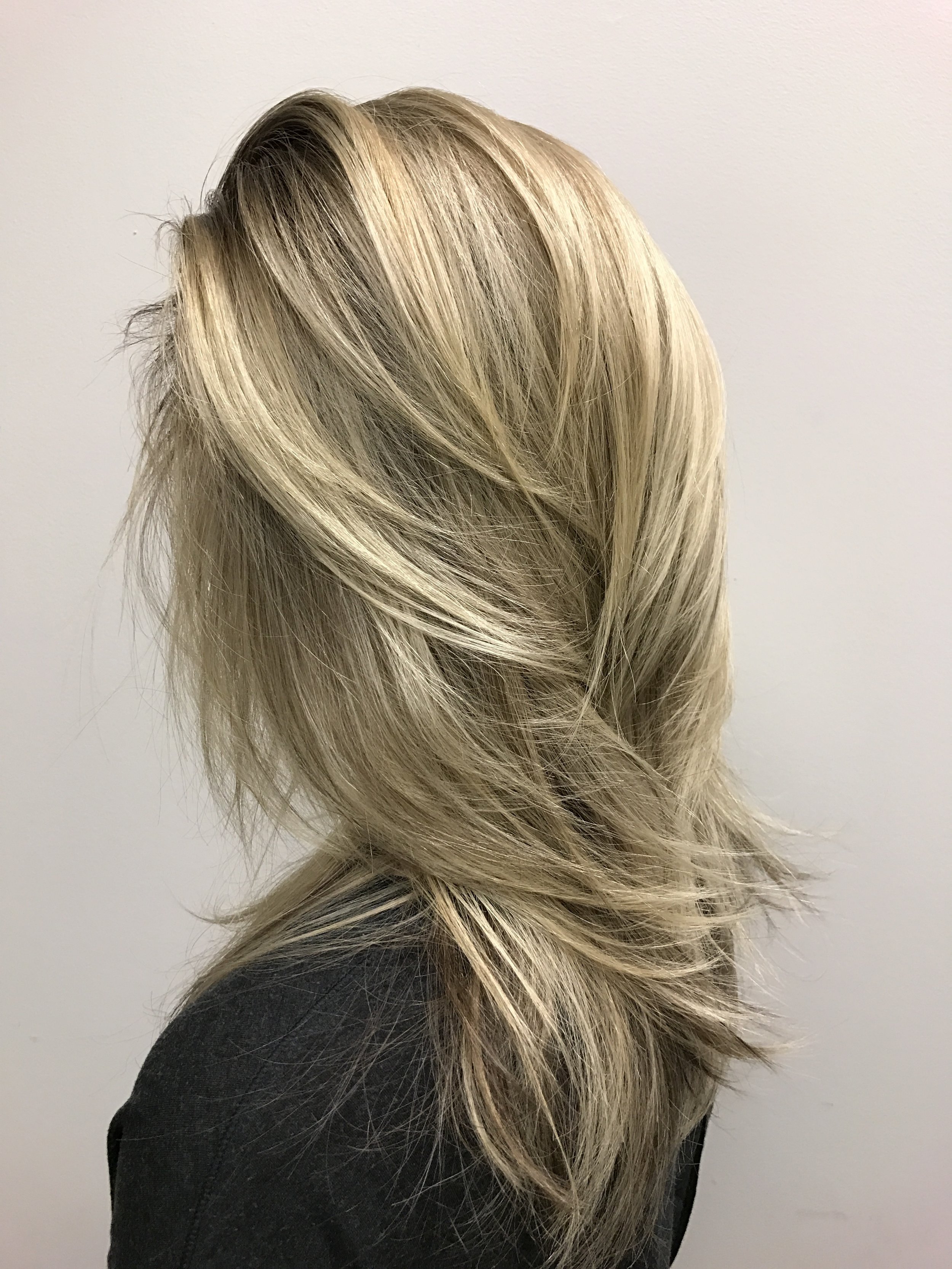How Heat and Elements Affect Your Hair Color
Just as warm weather has an effect on our moods, eating patterns, as well as our activities, temperature can also affect the results of how our hair color processes. The temperature of our bodies, particularly our heads can play a determining role as to how well our hair color takes. Ever wonder why previous color sessions may have had better results than others and your stylist swears they didn’t do anything to change your hair color formula? Below we’ll discuss how much our hair is affected by external factors and solutions to attain the best results.
Just as warm weather has an effect on our moods, eating patterns, as well as our activities, temperature can also affect the results of how our hair color processes. The temperature of our bodies, particularly our heads can play a determining role as to how well our hair color takes. Ever wonder why previous color sessions may have had better results than others and your stylist swears they didn’t do anything to change your hair color formula? Below we’ll discuss how much our hair is affected by external factors and solutions to attain the best results.
Hot Head
If you’re heading to the salon straight from the gym, give yourself some time to physically cool down prior to having color applied. Having worked in varying clients from Denver, Las Vegas and Dallas, hair stylist Scott Risk always fine tunes how he performs his color services according to the climate. “In summer months, I always place my hand on my client’s scalp and if there’s too much heat emitting, I’ll defer from placing a cape around my client and circulate cool air around the top of their head with my blow dryer in order to lower their body temperature.” Taking the time to perform this little step, prior to applying hair color to ensure the scalp isn’t too hot helps prevent a negative chemical reaction, which otherwise may produce “hot roots”, causing brighter than expected results.
In addition to how heat can affect color results, another element often overlooked that significantly influences hair is one’s geography. Climates that are humid versus dry climates can drastically influence how hair color processes. In dry climates, stylists need to ensure that color doesn’t dry out while processing by utilizing an infrared dryer or plastic cap. It’s also important during summer months that salons maintain comfortable temperatures, while not blasting the air conditioning and chill out the salon by dropping the temperature so low that hair color doesn’t process to its full potential. Conversely, during winter months, the heat that keeps us warm indoors can be very drying to our hair and create static flyaways, which it’s why is extremely important to perform weekly deep conditioning treatments.
pH20
We all know how water dramatically differs from every county and state. The varying pH levels, minerals and chemicals in tap water significantly affects hair color processing and color retention on a daily basis. In order to combat the negative impact harsh water can have on your hair is to utilize clarifying shampoo several times a month and prior to receiving a color service. Another great move is to switch out you shower head with filtered shower heads and remember to properly maintain them by adding new filters.
How healthy?
Above all the overall health of your hair is the most significant factor that affects how well your hair color takes. Unhealthy hair that’s not well cared for, does not produce the full potential of the color you wish to achieve, which is also why it’s important to get regular trims or “dusting”. Many women attached to the length of their hair tend to rarely let shears touch their locks, due to the misconception their gaining more length. However, this tends to only result in overly dry, brittle and stringy ends that are anything but attractive. Additionally, this fear of the shears often makes it increasingly difficult to achieve longer, fuller hair due to “brush cuts”, which are the mini broken ends of brittle hair, which snap off daily when brushing hair due to neglecting maintenance trims.
In order to keep your hair in its best condition, it’s important to practice a home maintenance routine that gets hair healthy and prepped for upcoming color services, while also caring for your current color. In-salon treatments (Milbon Signature Professional 3-step deep conditioning treatment) provides that additional concentrated moisture or strength to improve hairs texture, which also preps it for color by improving the hair cuticle. If this outer layer of the hair is compromised and blown out, it’s unable to properly close and lock the color in. This often results in lackluster shine and faster fading.
Since so many factors can affect how color processes, it’s crucial to be open with your stylist, so they have a good understanding of your hair’s history. The more your stylist is informed about your hair, the better they can optimize your color results.
Filtered Perspective
In the photo edited realm of Instagram and Pinterest, it’s important to be realistic when considering the image you wish to achieve. With so many mobile editing apps with filters you need to know the difference between fantasy and what’s realistically achievable with your hair. Remember there’s a reason the model in the hair pic you love was selected to be the model for a reason. You don’t know her hair’s history, it’s condition, whether extensions are in her hair and how much the photo has been manipulated with filters. Also, make sure you have a great consultation with your stylist, particularly when making a change and be honest with them. If you use a heat styling tool most days, are frequently in the sun or workout regularly and sweat a lot, leaving your hair soaked, let your colorist know, because particulars such as these can have a significant impact on how your hair color processes.
6 Tips to Care for Hair Extensions
The investment of quality hair extensions has big pay offs and can be life changing. Seamlessly blended hair extensions that look real and have movement, propel your self confidence, make your hair the envy of others and turn heads. Almost all the beautiful hair you see in fashion magazines and celebrities is attributed to at least some degree of assistance from hair extensions. As transformational as they are, there are 6 tips that are recommended in order to best maintain them.
The investment of quality hair extensions has big pay offs and can be life changing. Seamlessly blended hair extensions that look real and have movement, propel your self confidence, make your hair the envy of others and turn heads. Almost all the beautiful hair you see in fashion magazines and celebrities is attributed to at least some degree of assistance from hair extensions. As transformational as they are, there are 6 tips that are recommended in order to best maintain them.
1. Brush Properly
Make sure to brush through your hair two to three times per day in order to prevent tangling. The two most important times of day to brush your hair is upon starting your day and going to bed. A common misconception that leads to clumps of hair matting up is due to excessive caution and gentle brushing of the hair extensions for fear of damaging your own hair. While you do want to be conscientious and take great care of your hair, it's crucial to brush through your hair at the scalp, in order separate any hair that begins to tangle. Just as flossing your teeth, think of it as significant as flossing your hair. Use a hair extension loop brush, which is specifically designed for safely brushing through the roots of your hair.
To prevent unnecessary tension on your real hair, start by holding your hair extension hair at mid-length and gently brush from the length up. As you approach your scalp, expose the bonds or tubes with same hand that was initially securing your hair extensions hair and gently brush against your scalp, so the bristles and loops can separate any hair that's beginning to tangle.
2. Tangle Free
We all know getting ready in the morning is a time consuming rush to get out the door, so anything to give you a head start is appealing, especially with the addition of more hair requires extra drying time. Washing your hair at night is a great way to save time in the morning, however, make sure to completely dry it before heading beneath the sheets. For one, the extra weight of wet hair can lead to tangling and breakage. Also, keep bonded and tube extensions tangle free by loosely braiding them prior to heading to bed and you'll wake with beautiful, naturally wavy hair.
3. Use The Right Hair Care Products
Don't skimp on low quality hair care products that can literally transform good hair extension hair into a dry, frazzled mess. Hair extensions have a natural inclination to dryness, since they don't receive the benefits from the natural oils from our scalp to moisturize them. Milbon Smoothing Shampoo, Smoothing Treatment and Luminous Bodifying Oil detangles and smooths, while improving overall texture, leaving hair feeling silky, smooth and soft. Stay away from products loaded with alcohol, which lifts moisture from the hair, leaving them with a frizzy or straw-like texture.
4. Start in the Shower
Upon having your hair extensions applied, hold off washing them for 48 hours. If you have bonded hair extension this will allow the bonds to properly adhere. Gently massage your scalp and roots to loosen and remove any debris.
If you have the i-tip tube human hair extensions, wait a couple days to wash in order to allow the hair to grow slightly, so it has some breathing room and puts less tension on your hair.
Use sulfate and silicone-free shampoos and after rinsing gently squeeze out the excess water, before applying a quality conditioner from mid-length's to the ends. Take special precaution, not to allow the conditioner to get on the keratin bonds or i-tip hair extension tubes. Never wring the hair. Friction will raise the cuticle and make your hair more susceptible to damage. Pro tip: Find a great microfiber towel since it will reduce friction.
5. Hydrate
Styling products and heat tools can create gorgeous blowouts, but they can also wear down your hair. To counter this, deep condition every week, such as Milbon Smooth Professional Treatment, so hair stays hydrated, shiny and healthy looking. Apply the deep conditioning hair masque treatment from mid-length to ends on freshly washed hair that's been gently rung out and towel dried, so the treatment is concentrated, rather than diluted from excess water. Make sure to never to speed dry your hair by roughing it dry with a towel, which terrible for your hair, as well as the hair extension. If you have a gym membership that has a steam room, make use of it and you'll receive the absolute best benefits above all other methods. Regular monthly deep conditioning treatments can offer benefits that extend beyond helping to alleviate dryness.
Enhance Your Beauty With Highlights
Highlights have the potential to work wonders to enhance your look. From youthful, summery and sun-kissed to bold and dramatic, highlights are amazing because they have the ability to enhance not just your hair, but also the appearance of your face and overall look. Whether you’re getting them for the first time or get them often, here’s what you need to know about getting the most out of highlights.
Highlights have the potential to work wonders to enhance your look. From youthful, summery and sun-kissed to bold and dramatic, highlights are amazing because they have the ability to enhance not just your hair, but also the appearance of your face and overall look. Whether you’re getting them for the first time or have gotten them so many times that you can’t remember, here’s what you need to know about getting the most out of highlights.
Benefits of Highlights
Highlights can give you a beauty boost that can transform boring color into enticing brilliant hues of dimension, depth and beauty to your locks. They can bring out the pigment in your eyes and slim your face, while accentuating your cheek bones. They can help layers stand out, while creating the look of fullness and draw the eye to their brilliance.
Balayage Highlights
What You Should Know About Highlights
Even if you’ve had highlights many times, it’s possible not to know all about them. That’s because there are different techniques and general guidelines for achieving the most flattering hue for your complexion.
Color: When you want a natural look that enhances your complexion, the key is to choose a color that’s two to three levels lighter than your base color and within the same tonal group of your hair color.
Choose colors that work with your skin tone:
If you have greenish veins or gold speckles in your eyes, your a warm skin tone, so lean towards cool tones, such as sandy or beige blonde.
If you have blue veins, with an olive skin tone and silver-grey speckles in your eyes, then opt for golden-blonde tones, such as, creamy, strawberry or honey blonde, which will neutralize any green in your skin by bringing warmth to your face.
If you have pink in your skin, avoid warm colors, so as to not flush out your face in the same way as wearing a red top typically would.
Those with neutral skin tones have the most flexibility to choose between warm or cool highlights
Foil Highlights
Techniques: The two main techniques for applying highlights are balayage or with foils.
Balayage is a freehand style that involves painting directly onto the hair for a melted, grown out look that’s further from the scalp. Since the painted on lightener processes “open air”, as opposed to inside a heat contained foil, it processes significantly slower, which typically requires extended appointment times and sessions to achieve your desired goal, particularly if your hair is dark and especially if it’s been colored dark previously.
Foil highlighting involves painting color or lightener directly onto a foil. Foil provides a more seamless, balanced look starting from the scalp. Foils create an ideal environment for lightener to process effectively, so it’s easier to achieve a brighter blonde in less time and visits.
Tips: For youthful, sun-kissed, natural-looks, have strategically placed finely painted highlights applied around the face and then less towards the back of the head to allow enough space between them to offer depth and contrast. Also, sometimes low lights, which are darker are needed to add depth or bring back the contrast from over highlighting.






